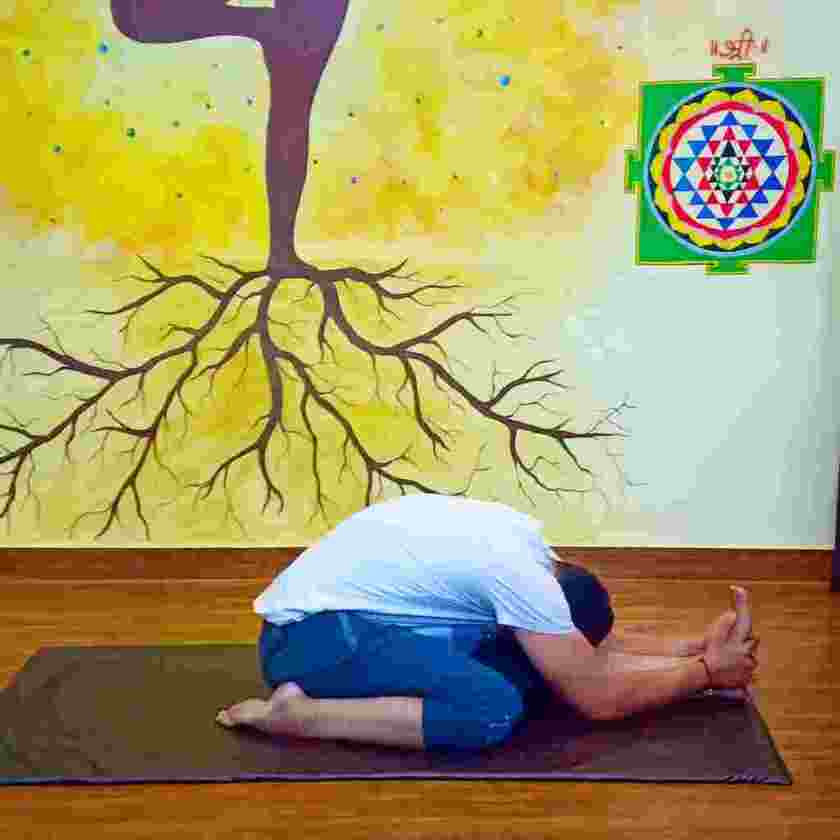By Sadhak Anshit Yoga Foundation
Sun, 11-Aug-2019, 13:50
#Sadhak Anshit Explains Triang Mukhaikapada Paschimottanasana
#Best Yoga Classes in India
#Ashtanga Vinyasa Yoga Classes in India
#Top Yoga Teacher in India
#Sadhak Anshit Yoga Classes
#Best Corporate Yoga Workshop in India
#Top Yoga Classes in Kanpur
#Best Yoga Classes in Kanpur
#Free Yoga Classes in Kanpur
#Best Yoga Teacher in Kanpur
#Yoga For Weight loss in Kanpur
#Power Yoga in Kanpur
#Yoga Classes By Sadhak Anshit
#Yoga in Kanpur
#Spondylitis yoga in Kanpur
#Best Home Yoga Trainer in Kanpur
#Group Yoga Classes in Kanpur
#Yoga for Diabetes in Kanpur
#Best yoga Products in Kanpur
#Best Yoga News in Kanpur
#Kanpur yoga Classes
#Yoga Classes in Kanpur
#Yoga Classes in Uttar Pradesh
#Best Yoga Instructor in Kanpur
#Best Yoga Institute in Uttar Pradesh
#Good Yoga Teachers in Kanpur
#Best Yoga Courses in Uttar Pradesh
#Best Yoga University in UP
#Yoga College in Kanpur
#Kanpur Yoga Colleges
#Yoga Institute in Uttar Pradesh
#Best Yoga Center in India
#Best Yoga Institute in India
#Best Yoga Teacher in India
#Best Yoga Teachers in World
#Best Yoga Teacher in Asia
#Best Yoga Training Institute in India
#Yoga Tools in Kanpur
#Yoga Mats in Kanpur
#Yoga Equipments in Kanpur
#Yoga Teachers Training Program in Kanpur
#Yoga International Training Program in Kanpur
#Best Yogic Dietitian Center in Kanpur
#Best Dietitian in Kanpur
#Best Yoga Diet Charts in Kanpur
#Best Yoga Nutrition Specialist in Kanpur
#Best Meditation Classes in Kanpur
#Top Meditation Classes in Kanpur
#Meditation Sessions in Kanpur
#Meditation Teacher Training Courses in Kanpur
#Osho Meditation Courses in Kanpur
#Meditation Classes in UP
#Best Meditation Center in India
#Meditation in India
#Meditation Masters in India
#Yoga Mystic in India
#Indian Yoga Teachers
#Classes Of Yoga in Kanpur
#Indian Yoga in Kanpur
#Chakra Meditation in Kanpur
#Kundalini Jagran in Kanpur
#Best yoga Classes in India
#Astrology Teachers in India
#Sadhak Anshit
#Vipassana Meditation Center in Kanpur
#Best Back Pain Therapy in Kanpur
#Prenatal Yoga in Kanpur
#Best Yoga Teacher Training Courses in Kanpur
#Best Yoga Teacher Courses in Kanpur
#Best Yoga Courses in Kanpur
#Shiva Yoga Institute
#Shiva Yoga Kanpur
Triang Mukhaikapada Paschimottanasana - Sadhak Anshit
Triang Mukhaikapada Paschimottanasana is a seated forward bend that stretches the back of the body and calms the mind.
The name comes from several Sanskrit words.
Triang, meaning “three limbs”;
Mukha, meaning “face”;
Eka, meaning “one”;
Pada, meaning “foot”;
Paschima, meaning “west” or “back of the body”;
Uttana, meaning “intense stretch”; and
Asana, meaning “posture” or “pose.”
From dandasana (staff pose), one leg is folded back at the knee so it rests along the corresponding hip, while the other leg remains straight. The torso then folds at the hips as the arms reach for the extended foot.
Triang mukhaikapada paschimottanasana is also known in English as three parts forward bend pose.
Sadhak Anshit Explains Triang Mukhaikapada Paschimottanasana
This asana is a more challenging variation of paschimottanasana (seated forward bend), which is one of the 12 basic postures of Hatha yoga and is also part of the Ashtanga yoga primary series.
Traditionally, as a forward bend, triang mukhaikapada paschimottanasana is believed to open the manipura (navel) chakra, the body's energy and vitality center.
Activating the manipura dispels fear and insecurity, and is associated with self-esteem, self-confidence and a sense of purpose.
Triang mukhaikapada paschimottanasana is a key preparatory asana for krounchasana (heron pose).
Those with limited flexibility or tight hips may practice the posture with a blanket or booster under the sit bone of the straight leg.


